Today’s post is written by Editorial Intern Perry Minella, who participated in NaNoWriMo in 2011 (no, she did not finish and no, she doesn’t want to talk about it).
Every November for the past 16 years, people from all walks of life have gathered in a special place on the internet to support and encourage one another in an exceptional task – writing a novel in one 30-day period. They do this through National Novel Writing Month, an non-profit organization founded in 1999 by Chris Baty and other writers. The goal is to write a 50,000 word novel over the month of November (about 1,667 words per day). No one is expecting perfection—as conventional NaNo wisdom goes, editing is for December. The point is simply to put pen to page (or fingers to keyboard) and to see what comes out.
The website provides participants with forums to socialize and share ideas and commiseration; it also has exercises and suggestions to help those suffering from writer’s block. Pep talks written by established authors are regularly sent out to give encouragement. The 2014 pep talk line up includes Veronica Roth, Tamora Pierce, Brandon Sanderson, Chuck Wendig, Kami Garcia, and Jim Bitcher.
Last year, 310,095 people participated in NaNoWriMo and many tens of thousands more participated in the other programs the organization runs during the other eleven months of the year, the Young Writers Program and Camp NaNoWriMo. This year is no different.
It is now day 20 of NaNoWriMo 2014 and we here at Workman thought those of you furiously typing away might need a little encouragement. So here is a list of 8 successful novels that started out as NaNoWriMo projects:
1. Water for Elephants, by Sara Gruen
Published: 2007 by Algonquin (a Workman imprint)
Summary: This story is told mostly in flashbacks detailing the life of Jacob Jankowski and his time working in a struggling circus during the Great Depression.
The NaNo Story: It may come as a surprise to some readers that this successful novel’s first draft was the result of NaNoWriMo! The book spent over a year on the New York Times Best Seller List and was later turned into a major motion picture staring Reese Witherspoon and Robert Pattinson.
In a 2007 pep talk that Gruen wrote for NaNoWriMo, she passed on some important advice:
“However far behind you are, take comfort in knowing that there is somebody else out there in the same boat, and look for that next fun scene. And then the next. And if that doesn’t work, set someone on fire. In your book, of course.”
2. Cinder, By Marissa Meyer
Published: 2012 by Macmillan Publishers
Summary: This YA hit is a re-imagining of the classic Cinderella story with a sci-fi twist: Cinderella is a cyborg in a futuristic setting!
The NaNo Story: The first in a five-book series, Cinder was once a NaNovel. In fact, all three of the currently published books in this series (Cinder, Scarlet, and Cress) were started during the 2008 NaNoWriMo! As Meyer tells it, there was a contest in which the writer in her area who wrote the most words during NaNoWriMo would win a small role on a Star Trek episode. She managed to come in third place with 150,011 words, but all’s well that ends well, because those 150,011 words would became part of a best-selling series!
When discussing her NaNo experience, Meyer noted that not everything that was written during NaNoWriMo made it past the editing phase. As she puts it, “I may not produce anything of quality during NaNoWriMo, but I always come away with a great road map.”
3. The Night Circus, by Erin Morgenstern
Published: 2011 by Doubleday
Summary: Another circus-themed success story, The Night Circus centers around a magical, traveling circus and the two young magicians who are forced into a deadly competition by their mentors, with the fates of performers and patrons alike hanging in the balance.
The NaNo Story: This book, which spent seven weeks on the New York Times Bestseller List and won an Alex Award from the American Library Association in 2012, was formed over the course of three NaNoWriMo challenges (which is technically cheating, but we won’t hold it against her). Morgenstern has said that the book’s unusual setting came about when she was she was writing a different novel and wasn’t getting anywhere with the plot. So she followed “some ancient NaNo wisdom: when in doubt, just add ninjas.” She sent her characters to the circus and never looked back. Now the movie rights have been optioned by Summit Entertainment and the project is in development.
4. Wool, by Hugh Howey
Published: Self-published in 2011 and then traditionally published in 2013 by Simon & Schuster
Summary: A post-apocalyptic story about a society that has moved underground to escape the toxic environment above. Everything is fine as long as everyone follows the regulations. But one day a steadfast leader breaks all the rules and asks to go outside…
The NaNo Story: In 2011, Hugh Howey was already a NaNo veteran, having participated in two previous years. He had an outline for his third time around and knew exactly what he was going to write. But unexpectedly, a novelette that he had self-published earlier in the year, Wool, began to get a lot of online attention and readers were demanding more. So he dropped his carefully planned outline and decided to write three more novelettes further exploring the world he had already created. These would later become the Silo Series, a total of five stories (three of which were NaNo babies) you can find in one volume called Wool Omnibus Edition. Since publication, this book has spent time on the New York Times Bestseller List and won IndieReader’s Best Indie Book of 2012 Award in sci-fi. Ridley Scott has since picked up the film rights. Howey himself says:
“I can say with confidence that I wouldn’t have written the same books if I’d written them any other way. The compressed nature of a NaNo-novel makes for a tighter plot. It reinforces the importance of not taking a day off. NaNoWriMo isn’t a writing exercise for me. It trained me to be a pro.”
5. Cuckoo, by Julia Crouch
Published: 2011 by Headline
Summary: Rose’s perfect, normal life is interrupted when her best friend Polly, grieving after the recent death of her husband, comes to stay. Rose gladly opens her home to her friend, but soon dark and mysterious things start to happen. Is Polly responsible?
The NaNo Story: In 2008, Crouch, like many, came to NaNoWriMo to help with her writer’s block. She done NaNo the year before at the suggestion of a tutor from her creative writing class and had been intrigued by the concept:
“The whole ethos of sending your internal editors away for November was incredibly useful – no more despair, just the necessity to keep going, spurred on by a frequently crashing website full of wonderful communities, motivational exercises and inspirational stories.”
When she tried it again in 2008, Crouch ended up with a complete manuscript to work with and after some heavy editing she sold her NaNovel to Headline, with a deal for two more.
6. Fangirl, by Rainbow Rowell
Published: 2013 by St. Martin’s Griffin
Summary: Cath is a huge Simon Snow fan—rereading the books, dressing up in costume for the midnight movie premieres, even writing popular fanfiction. Now she and her twin sister Wren are going off to college for the first time. When Wren tells Cath she doesn’t want to be roommates and encourages her stop being involved in the Simon Snow fandom, Cath doesn’t want to let go. She has to wonder: can she handle all this change?
The NaNo Story: Rainbow Rowell has confessed to being “skeptical” of NaNoWriMo before she tried it. After all, she had already published two books and both had taken her more than a month to write (the first took five years). But Rowell was intrigued by the idea of speed-writing a first draft, “to fast-forward through that desperate, blank-page phase and get to the good stuff.” So she signed up for the 2011 NaNoWriMo and got to work. The fast pace forced Rowell to put down the red pen and just write and when she had in the end surprised her:
“Here’s something that really shocked me during my revisions: I kept almost every word I wrote during NaNoWriMo.
That 50,000-word pile I made wasn’t a mess at all. It’s some of the bravest writing I’ve ever done, and it includes my all-time favorite character, a guy I think I would’ve second-guessed to death under normal circumstances. NaNoWriMo helped me push past so many of my doubts and insecurities and bad habits. And I think that’s partly why I love Fangirl so much now—because I remember how swept away I felt when I was writing it.”
7. The Darwin Elevator, by Jason M. Hough
Published: 2013 by Del ray
Summary: It’s the mid-23rd century and humanity has been decimated by an alien plague. The only human settlement left is Darwin, Australia, where a space elevator built by the plague’s creators mysteriously protects the inhabitants. But now the elevator is malfunctioning and it is up to Skyler Luken, who has a natural immunity to the plague, and Dr. Tania Sharma to save what is left of humanity.
The NaNo Story: Hough was another NaNo veteran, having first participated in 2007 . In 2008, he decided to try again and penned a first draft of this novel, the first of the Dire Earth Cycle series. Hough then edited and reworked the manuscript until 2011 when he sold it to a publisher, with a contract for two more books in the series! The Darwin Elevator made it to the New York Times Best Seller List and has been compared to such sci-fi favorites as Joss Whedon’s Firefly and James S.A. Corey’s Expanse series.
8. The Beautiful Land, by Alan Averill
Published: 2013 by Ace Trade
Summary: Takahiro O’Leary works at the Axon Corporation in the coolest job ever—he is an explorer of parallel timelines. All seems to be going well until one day he returns with some information that gives Axon the means and incentive to change the past and the future of our own timeline. If Takahiro doesn’t stop Axon, he’ll lose the woman he loves forever. As he fights against Axon for the future, Samira, the inventor of the time travel device has plans of his own, searching for a timeline called the Beautiful Land—and he’ll do anything to find it…
The NaNo Story: Averill wrote most of the first draft of this novel during NaNoWriMo when a few of his friends decided they were going to participate in the event. He finished it by January of the following year and went about trying to get it published. After a few unsuccessful attempts at getting an agent, he eventually decided to take a chance and enter the manuscript into Amazon’s 2012 novel-writing contest. He ended up winning the Amazon Breakthrough Novel Award and the publishing contract that came with it.
Averill credits NaNoWriMo with helping him to keep up the pace:
“The Beautiful Land turned out to be a pretty fast-paced book, and I credit NaNoWriMo for a good deal of that. One of the great things about NaNo is that you don’t have time to think about what you’re doing. You can’t decide to rewrite the first nine chapters because you had this really great idea, or go back and turn your Iowa farmboy into a lesbian bowler from Canada. You’re basically a Writer Shark, and if you don’t keep swimming forward at all times, you’re going to die.
The best piece of advice he can give to fellow writers is simple: “… finish the book. That sounds really simple, but it’s one of the harder things to do. Don’t tweak. Don’t edit. Don’t go back and change things. Don’t do any of that. Just keep going forward until it’s done and then worry about all that stuff. Be the shark, man.”
So there you have it! That’s our list of NaNoWriMo success stories. There are of course plenty more–over 250 NaNovels have been traditionally published and many others have been self-published. For the full list, click here. And if you’d like to participate in NaNoWriMo this year (it’s never too late to start!) or in the future, you can visit their website, here.
And finally, to all you slogging through week three of your novel writing endeavor, we wish you the best of luck! And psst: you may want to check out The Essential Guide to Getting Your Book Published when you finish.


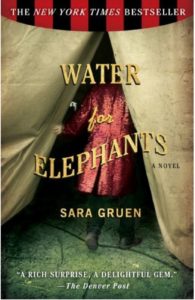

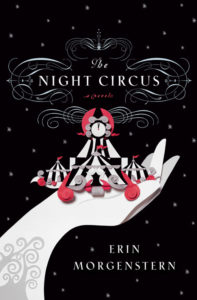
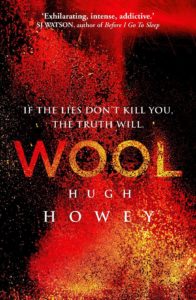
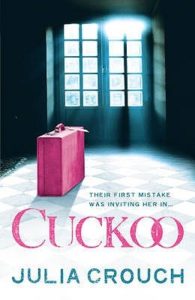
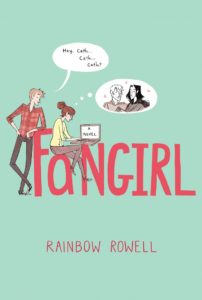
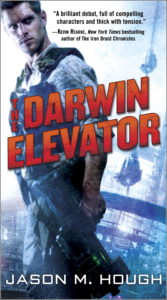
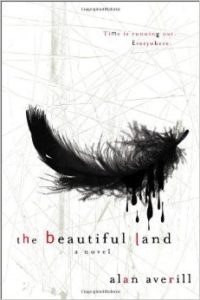


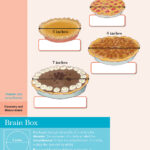
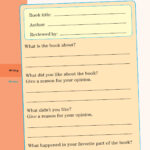
No Comments